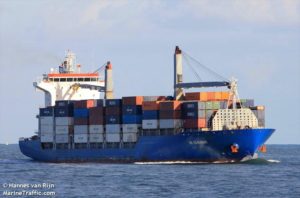A version of this first appeared on off-the-beaten-track.net.
FAQS about Freighter Travel
Documentation, Visas, etc.
It can be a long and frustrating process arranging travel on a freighter. Not that many ships carry passengers anymore, they carry fewer these days because there’s no doctor on board, and there are varying age limits. The most popular routes are sometimes booked a year or more in advance, so it’s wise to get started early. Travel to a specific destination can also be frustrating, because many shippers prefer not to book passengers for a partial voyage.
The documentation required is also daunting, depending on which countries the ship will stop in. Visas, vaccinations, release forms, contracts, proof of travel insurance and medical certificates acquired no more than 30 days in advance of sailing are some of these. Handy to have a scanner so you can sign things and simply email them back. US citizen entry requirements for other countries can be found at: abriggs.com.
Booking Passage
Fortunately, most travel agents specializing in freighter voyages are familiar with all these requirements and are good at handling things in a timely fashion. My favorite is a UK firm called The Cruise People, because they have more varied and interesting offerings. For information about what it’s like to be on a freighter, freightercruises.com is the most complete – with the caveat that I have found this agency less than responsive. They all will require a 50% deposit to hold a booking.
Preparation
Before my first voyage, I spent hours on line looking at maps of ports and collecting tourist information for every port city, all of which I printed and took with me. This was very useful preparation, although foul weather and a nighttime arrival prevented my disembarking in two of them. Unpredictability is a watchword in freighter travel. One never knows how long the ship will be in port, and shore leave is always at the captain’s discretion.
Communications at Sea
Internet: some companies are now offering individual email accounts through their satellite connections. This is email only — no browsing is available. There is the sat phone, but it’s expensive, and its use is also at the discretion of the captain.
What to Bring
Packing for my first voyage took me two months! I was going to be in three climates and I had to keep extending my checklist when I remembered something else I couldn’t be without. Be prepared for 220 voltage, and take enough of your prescription medications to last the whole voyage. Ships’ medical stores are pretty complete, including antibiotics, and there’s a “slop chest” for cigarettes, toothpaste and other small items, although brands are limited. For some it may be useful to know that some companies, CMA CGM among them, now have a “dry ship” policy. This doesn’t prevent your bringing liquor on board, as long as you’re discreet about it (luggage isn’t inspected), and nobody objects if you search out liquor stores ashore.
There’s always some kind of gym equipment on board, and sometimes a ping pong table, but if you plan to do yoga, bring a mat – few cabins are carpeted. Bring a tablet well-stocked with movies, music, podcasts and books, if looking at the ocean all day is not your thing. Some fellow passengers have brought cell phones with international calling cards, so they can at least text home when within range of 3G service. Don’t forget your chargers! A camera. The list goes on . . . .
Money
Make sure you have an international debit card so you can withdraw local currency from ATM machines, which are ubiquitous in all the places I have visited, except on Fiji, where there are three exchange booths on every block.
Sea Sickness
Sometimes, the weather can be rough, and freighters are not equipped with stabilizers as are cruise ships, so they bounce around a lot. Anti-nausea pills help (they put me to sleep), the but best thing I’ve found are Sea Bands, small wrist bands with a round plastic button that you position exactly two finger widths above inside of the wrist. There’s an acupressure point there that controls nausea. You can find these on Amazon.
Accommodations
Cabins are more than adequate, with bed, desk and chair, sofa and coffee table, mini-fridge, plenty of storage space and a private bathroom (shower only), air conditioning and a window for looking out at either containers or the ocean, maybe both. Once you’re unpacked, you’ll feel perfectly at home. Happy sailing!
© Sandra Shaw Homer, 2016

